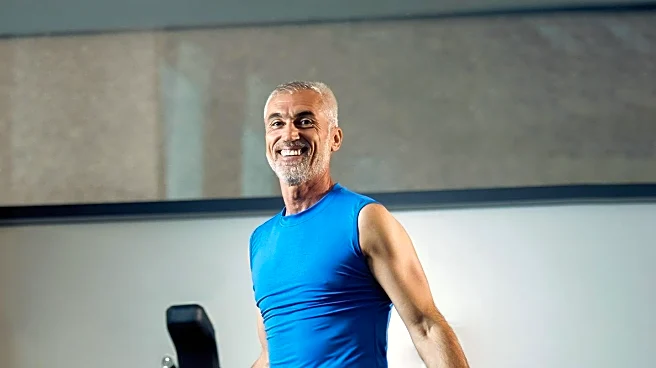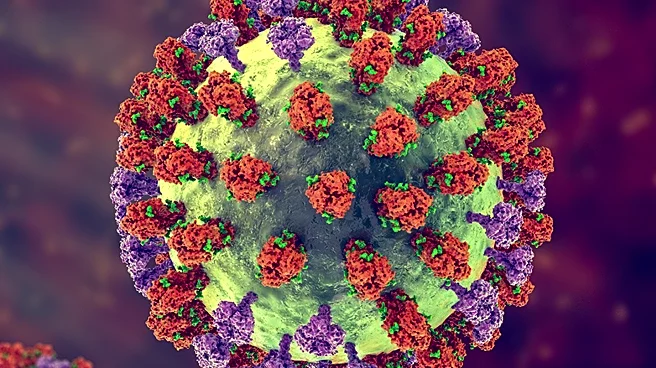What's Happening?
A recent study has introduced new fitness standards specifically for older athletes, ages 50 to 90-plus, who participate in the National Senior Games. The study, led by Becca D. Jordre, a professor of physical
therapy at the University of South Dakota School of Health Sciences, developed the Sustained Athlete Fitness Exam (SAFE) to measure cardiovascular health, muscular strength, power, flexibility, and balance. This initiative was driven by the need for more challenging fitness tests, as existing ones were deemed too easy for competitive older athletes. The study involved 4,659 senior athletes, revealing that most participants had high strength and aerobic conditioning, with few experiencing chronic conditions. The SAFE provides benchmarks for athletes and non-athletes, allowing individuals to assess their fitness levels against elite older athletes.
Why It's Important?
The introduction of the SAFE provides a valuable tool for understanding the physical capabilities of older athletes, challenging age-related limitations. This development is significant as it highlights the potential for maintaining high levels of fitness and health well into older age, which can influence public health policies and encourage more people to engage in physical activities. The study's findings could inspire older adults to pursue competitive sports, promoting a healthier lifestyle and potentially reducing healthcare costs associated with age-related diseases. Additionally, the benchmarks set by the SAFE can serve as motivation for individuals to improve their fitness, contributing to overall societal well-being.
What's Next?
The SAFE tests are now available for all athletes who qualify for the National Senior Games, with exercises provided to improve scores if needed. The study's authors suggest that the SAFE could be used by non-athletes as well, although it is primarily designed for competitive athletes. As the popularity of masters sports grows, there may be increased interest in adopting these standards more broadly, potentially influencing fitness programs and research focused on older populations. The study's findings could also lead to further research into the physiological and performance aspects of older athletes, enhancing our understanding of aging and fitness.
Beyond the Headlines
The SAFE tests not only provide benchmarks for physical fitness but also challenge societal perceptions of aging and athleticism. By demonstrating that older adults can maintain high levels of fitness, the study encourages a reevaluation of age-related stereotypes and promotes inclusivity in sports. This could lead to broader cultural shifts, where aging is seen as an opportunity for continued growth and achievement rather than decline. The study also underscores the importance of tailored fitness assessments, which could influence how fitness is approached in various age groups, fostering a more personalized and effective approach to health and wellness.











